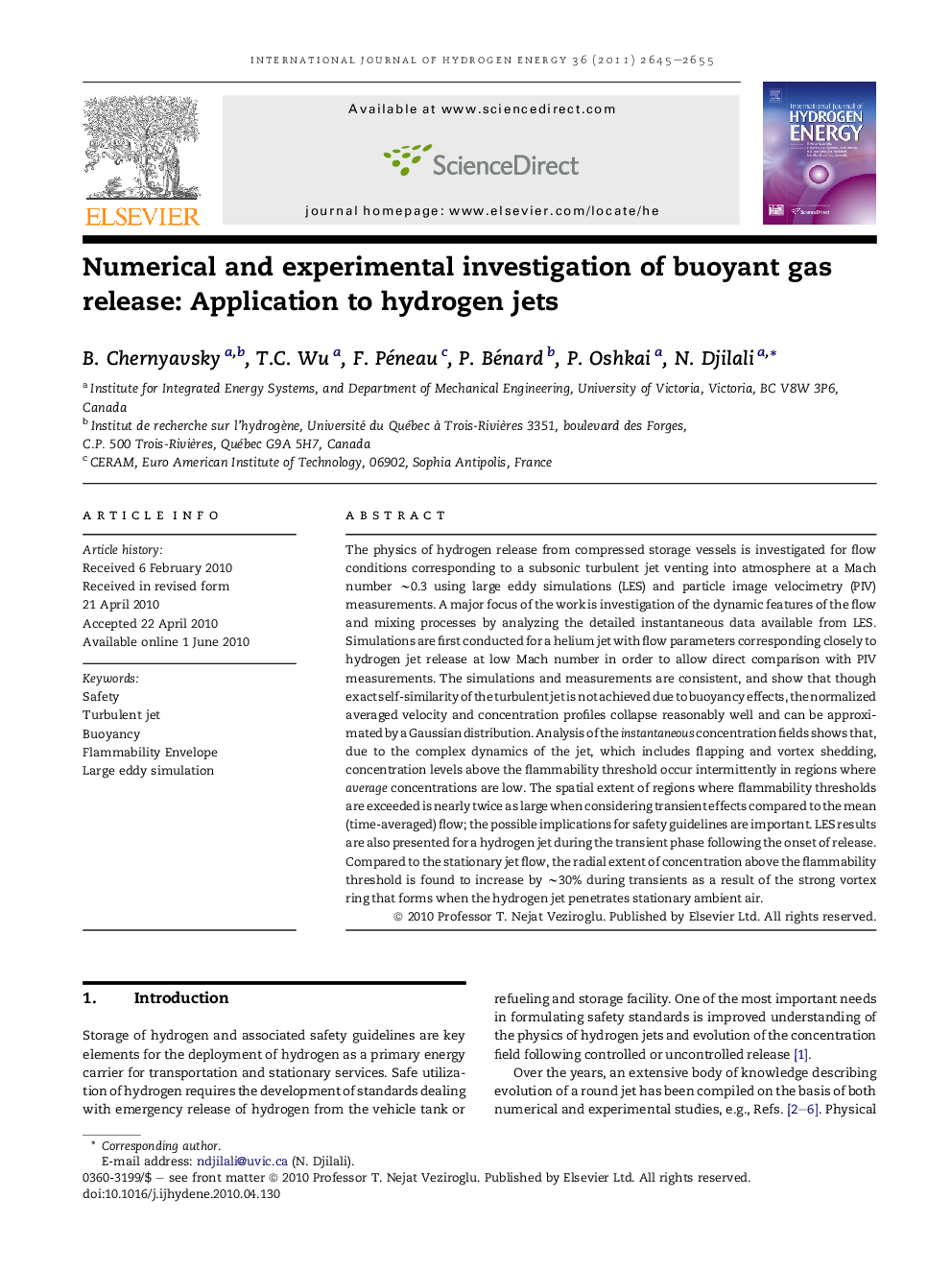| Article ID | Journal | Published Year | Pages | File Type |
|---|---|---|---|---|
| 7724584 | International Journal of Hydrogen Energy | 2011 | 11 Pages |
Abstract
The physics of hydrogen release from compressed storage vessels is investigated for flow conditions corresponding to a subsonic turbulent jet venting into atmosphere at a Mach number â¼0.3 using large eddy simulations (LES) and particle image velocimetry (PIV) measurements. A major focus of the work is investigation of the dynamic features of the flow and mixing processes by analyzing the detailed instantaneous data available from LES. Simulations are first conducted for a helium jet with flow parameters corresponding closely to hydrogen jet release at low Mach number in order to allow direct comparison with PIV measurements. The simulations and measurements are consistent, and show that though exact self-similarity of the turbulent jet is not achieved due to buoyancy effects, the normalized averaged velocity and concentration profiles collapse reasonably well and can be approximated by a Gaussian distribution. Analysis of the instantaneous concentration fields shows that, due to the complex dynamics of the jet, which includes flapping and vortex shedding, concentration levels above the flammability threshold occur intermittently in regions where average concentrations are low. The spatial extent of regions where flammability thresholds are exceeded is nearly twice as large when considering transient effects compared to the mean (time-averaged) flow; the possible implications for safety guidelines are important. LES results are also presented for a hydrogen jet during the transient phase following the onset of release. Compared to the stationary jet flow, the radial extent of concentration above the flammability threshold is found to increase by â¼30% during transients as a result of the strong vortex ring that forms when the hydrogen jet penetrates stationary ambient air.
Related Topics
Physical Sciences and Engineering
Chemistry
Electrochemistry
Authors
B. Chernyavsky, T.C. Wu, F. Péneau, P. Bénard, P. Oshkai, N. Djilali,
